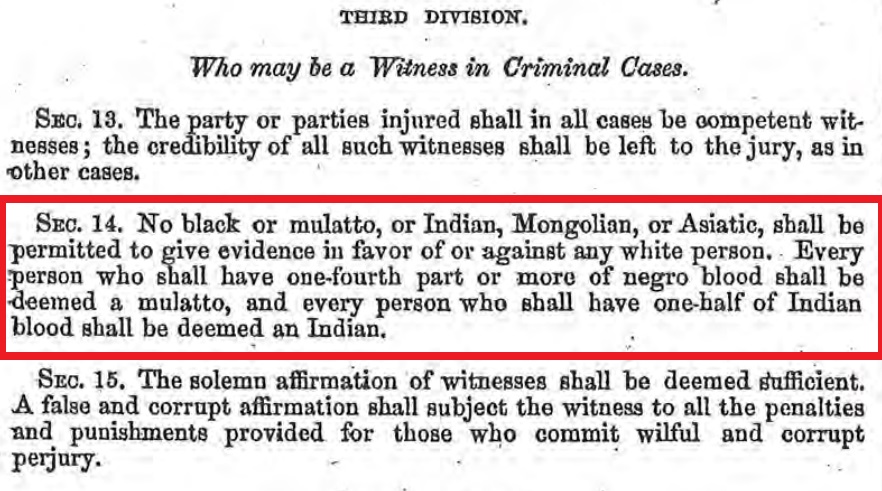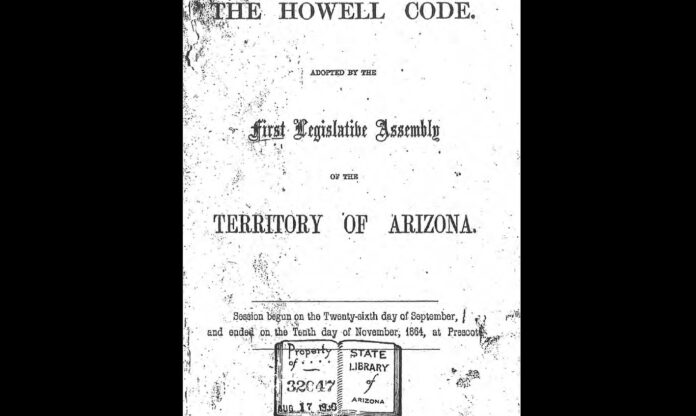On Tuesday, the Arizona Supreme Court ruled in Planned Parenthood v. Mayes and Hazelrigg that a statute drafted in 1864, some 48 years before Arizona became a state, was still in effect and threatens to jail for two to five years any doctor who performs an abortion in the state.
The only exception is to save the life of the mother, not rape and incest, which are usual exceptions added to strict abortion bans in other states since the 2022 ruling in Dobbs v. Jackson Women’s Health that overturned the landmark 1973 Roe v. Wade decision.
Justice John R. Lopez IV wrote the opinion, which states explicitly that “physicians are now on notice that all abortions, except those necessary to save a woman’s life, are illegal.”
Lopez was joined by Justices James Beene, Clint Bolick and Kathryn H. King, all appointed by former Republican Gov. Ducey.

The dissent was penned by the two senior justices: Vice Chief Justice Ann A. Scott Timmer, joined by Chief Justice Robert M. Brutinel, who were both appointed by Ducey’s predecessor, fellow Republican Jan Brewer.

Even so, Ducey, who had signed the 2022 abortion ban into law, tweeted that his appointed justices had gone too far: “I signed the 15-week law as Governor because it is thoughtful conservative policy, and an approach to this very sensitive issue that Arizonans can actually agree on … The ruling today is not the outcome I would have preferred, and I call on our elected leaders to … heed the will of the people and address this issue with a policy that is workable and reflective of our electorate.”
Notably absent from the opinion is Justice Bill Montgomery, a controversial former Maricopa County Attorney and staunch anti-abortion advocate who finally bowed to pressure and suddenly recused himself in November because of comments attacking Planned Parenthood before he was appointed in 2019.
According to the Arizona Capitol Times, in 2015 he stated that Planned Parenthood “encourages the very behavior that leads to STDs and abortions” and “their business model relies on it,” then in 2017 stating that “Planned Parenthood is responsible for the greatest generational genocide known to man.”

Read the Planned Parenthood v. Mayes and Hazelrigg ruling here:
Planned-Parenthood-et-al-v.-Kristin-Mayes-and-HazelriggLopez opined that the ruling “does not rest on the justices’ morals or public policy views regarding abortion; nor does it rest on [Arizona Revised Statute] §13-3603’s constitutionality.”

Lopez then went into the history of jailing abortion providers under the Howell Code, passed on Nov. 10, 1864, by the First Legislative Assembly of the Arizona Territory.
It became state law in 1913 as ARS §13-3603, enjoined by Roe in 1973 until Dobbs overturned Roe in 2022.

The Howell Code’s Chapter X, Section 45, reads, “Every person who shall administer or cause to be administered or taken, any medicinal substances, or shall use or cause to be used any instruments whatever, with the intention to procure the miscarriage of any woman then being with child, and shall be thereof duly convicted, shall be punished by imprisonment in the territorial prison for a term not less than two years nor more than five years,” giving an exception to save the mother’s life.

If the court is going to rely on a 160-year-old territorial law in the modern era of smartphones, indoor plumbing, lightbulbs and typewriters, all unimagined when the code was written, it’s only a matter of time until the court dredges up other quaint provisions of the Howell Code, like Chapter X, Section 14: “No black or mulatto, or Indian, Mongolian or Asiatic, shall be permitted to give evidence in favor of or against any white person.”

First Territorial Legislature that passed Arizona’s now current abortion ban was hardly respectable:
- The Senate president, Coles Bashford, was the former governor of Wisconsin who fled to Arizona following a railroad bribery scandal.
- Sen. Mark Aldrich was indicted but acquitted for the mob murder of Mormon Church founder Joseph Smith.
- Sen. King Woolsey abducted a 10-year-old Yaqui girl, who bore him the first of three children before he married a “respectable” white Southern woman, then murdered by strychnine a band of Apache; his local fame in the “Pinole Massacre” got him elected.
- Speaker of the House William Claude Jones, who named our state, was known as a “pursuer of nubile females,” and married four times, with the last three of his wives being child brides aged 12, 15 and 14, respectively.
No wonder the Howell Code set Arizona’s age of consent at 10.
Should we go back to that now? We’ll have to wait on the court.
The Arizona Territorial government in 1864 was also hardly representative; Gov. John Noble Goodwin and all the state officers were not elected, but appointed by President Abraham Lincoln, and most had never set foot in state.
The Arizona State Legislature passed SB 1164 before the Dobbs ruling, creating A.R.S. §36-2322, which only made abortions illegal after 15 weeks. While SB 1164 explicitly did not overturn §13-3603, it allowed elective abortions up to 15 weeks. Lopez misread the provisions and claimed there is now textual ambiguity between the two statutes, choosing to interpret the territorial ban and making moot the 2022 law.

However, in her dissent, Timmer stated clearly, “There simply is no ‘textual ambiguity,’ as the majority claims.” The territorial statute generally proscribes a punishment for doctors who perform abortions without any specifics, but the 2023 law narrows that to a specific timeframe, limiting abortions after 15 weeks. She astutely notes that a speed limit may prohibit driving faster than 45 miles per hour, but that limit doesn’t make driving 35 mph on that road illegal. Likewise, “The state will prosecute physicians for performing abortions after the fetus reaches 15 weeks in age unless a medical emergency requires the procedure. The state will not prosecute physicians for performing abortions before the fetus reaches 15 weeks in age. These abortions are lawful. There is no room for misunderstanding.”
If read together, Timmer is correct that the statutes are compatible; the territorial law proscribes a penalty, the 2022 law sets a timeframe after which the penalty applies. Statutes must have equal weight before the law, but the opinion chose to give more weight to its preferred outcome: A total ban.
Both opinion and dissent concede that Arizona’s abortion question should be decided by the legislature or voters. The legislature could repeal the territorial era law and let the 15- week ban stand; meanwhile, Arizona voters will likely vote on a constitutional measure in November to legalize abortion, unless, of course, the court cites another territorial-era law and takes away Arizona women’s right to vote.
Christopher Fox Graham
Larson Newspapers
Proposed amendment to the Arizona Constitution:
“The Arizona Right to Abortion Initiative” may appear on the ballot in Arizona as an initiated constitutional amendment on Tuesday, Nov. 5, 2024. For a citizen-initiated constitutional amendment to qualify for the 2024 ballot, at least 383,923 valid signatures need to be submitted to the secretary of state by July 3, equal to 5% of votes cast for governor in the most recent gubernatorial election. On April 2, the Arizona for Abortion Access campaign announced that it collected at least 506,892 petition signatures.
According to the filing with the Arizona Secretary of State’s Office: “The Arizona Abortion Access Act amends the Arizona Constitution to establish a fundamental right to abortion that the State (defined by the act to mean the State, an agency of the State, or a political subdivision of the State) may not deny, restrict or interfere with [1] before the point in pregnancy when a health care provider determines that the fetus has a significant likelihood of survival outside the uterus without extraordinary medical measures unless justified by a compelling governmental interest (defined by the act as a law, regulation, policy, or practice enacted for the limited purpose of improving or maintaining the health of an individual seeking abortion care, consistent with accepted clinical standards of practice and evidence-based medicine, and that does not infringe on that individual’s autonomous decision-making) that is achieved by the least restrictive means, or [2] after that point in pregnancy if a health care provider determines an abortion is necessary to protect the life or the physical or mental health of the pregnant individual; and under which the State may not penalize individuals or entities for assisting a pregnant individual in exercising their right to abortion.”
The proposed constitutional amendment reads:
8.1. Fundamental right to abortion; definitions
A. Every individual has a fundamental right to abortion, and the state shall not enact, adopt or enforce any law, regulation, policy or practice that does any of the following:
1. Denies, restricts or interferes with that right before fetal viability unless justified by a compelling state interest that is achieved by the least restrictive means.
2. Denies, restricts or interferes with an abortion after fetal viability that, in the good faith judgment of a treating health care professional, is necessary to protect the life or physical or mental health of the pregnant individual.
3. Penalizes any individual or entity for aiding or assisting a pregnant individual in exercising the individual’s right to abortion as provided in this section.
B. For the purposes of this section:
1. “Compelling state interest” means a law, regulation, policy or practice that meets both of the following:
(a) Is enacted or adopted for the limited purpose of improving or maintaining the health of an individual seeking abortion care, consistent with accepted clinical standards of practice and evidence-based medicine.
(b) Does not infringe on that individual’s autonomous decision making.
2. “Fetal viability” means the point in pregnancy when, in the good faith judgment of a treating health care professional and based on the particular facts of the case, there is a significant likelihood of the fetus’s sustained survival outside the uterus without the application of extraordinary medical measures.
3. “State” means this state, any agency of this state or any political subdivision of this state.



